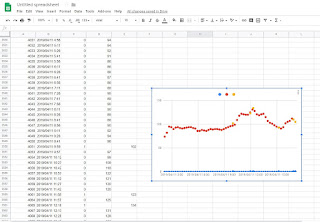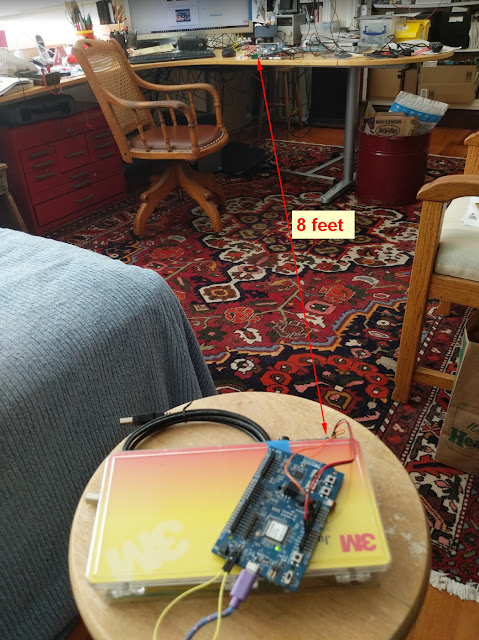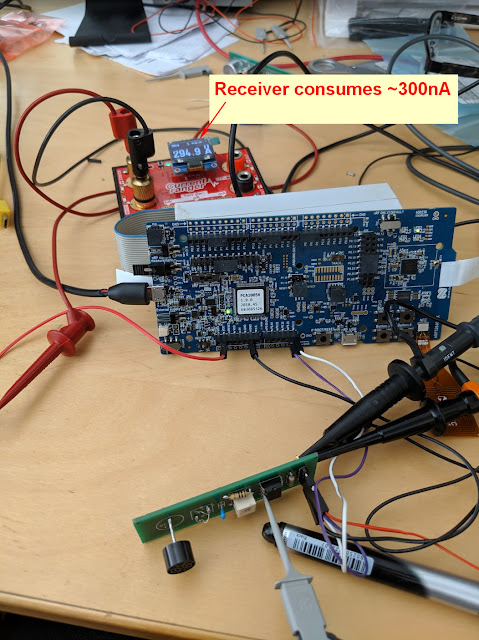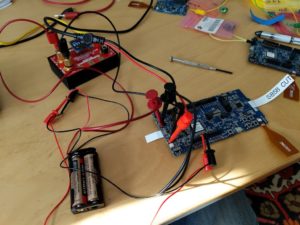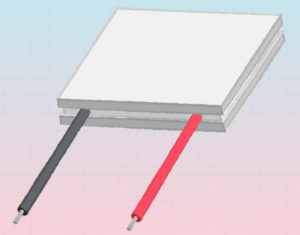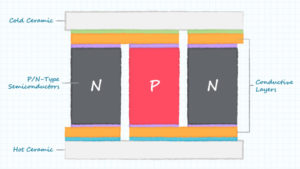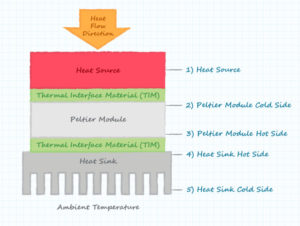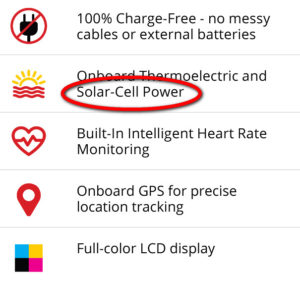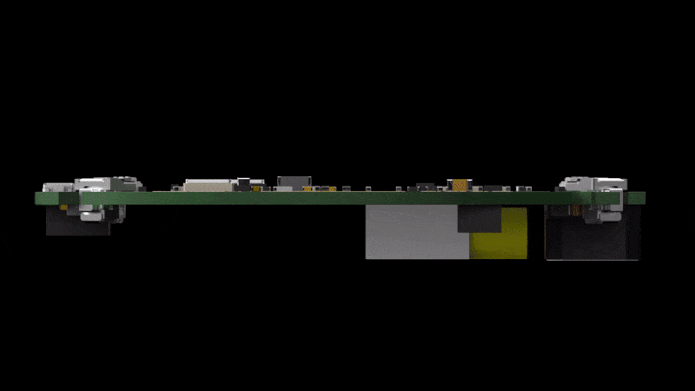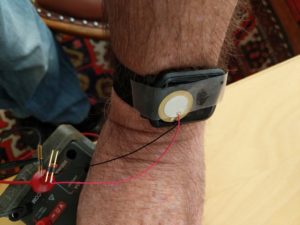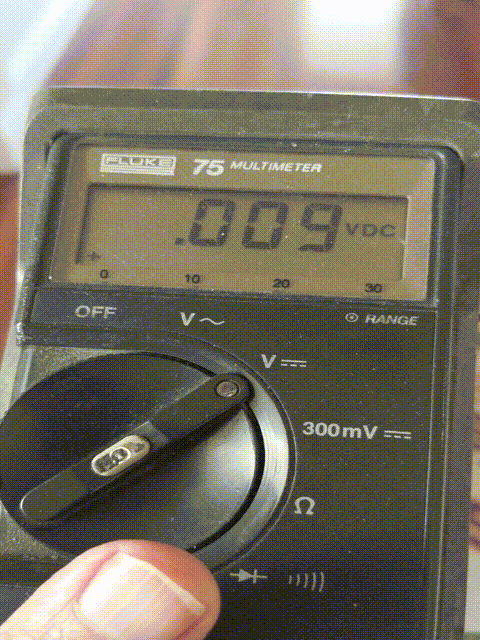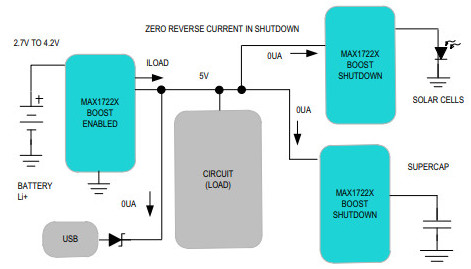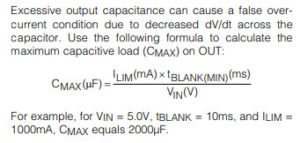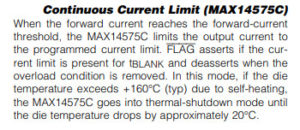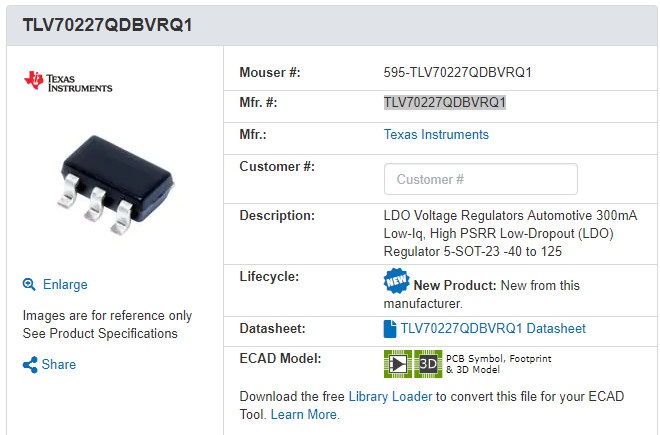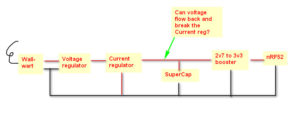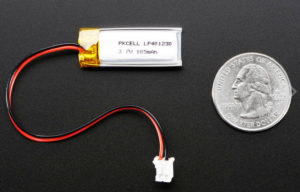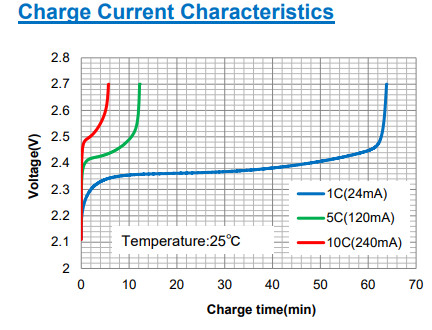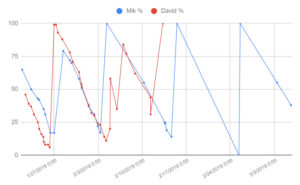Author: crackingcontraptions_3voi0v
- the time and date of reading,
- the time (and date?) the sensor was activated
- the reading #
- BG reading – probably in mmol/l
- a flag indicating if it was a 15m scheduled sample, or a user initiated sample
Ultrasonic Wake-up device (Results)
- I found some circuits online and butchered them to meet my peculiar needs. In particular I designed everything around the lowest operating current comparitor I could find (and understand)
- I actually built a transmitter and receiver which are clearly the most complex things I have built, and are all analog which is so much harder than digital stuff.
- I designed a PCB for the receiver, and only made one mistake – though it was kind of fatal – leaving off a critical wire. I guess there is some way to check out designs to make sure they are all fully connected.
- I figured out how to solder, and more importantly de-solder stuff using David’s hot-air gun. That’s a really useful thing to buy.
- I debugged the two devices using the scope. I figured out how to generate an FFT so I could make guesses about the source of the unwanted noise.
- I figured out how to make an appropriate low-pass filter to get rid of all the MHz crap, the source of which eludes me.
- I wrote transmitter software for an nRF52 to send a 40kHz (sine-ish) signal to the transducer using a couple of transistors in push-pull mode.
- I wrote receiver software to listen out for a signal, and reset the comparitor if it heard a signal.
Range and reliability demo
Discovery
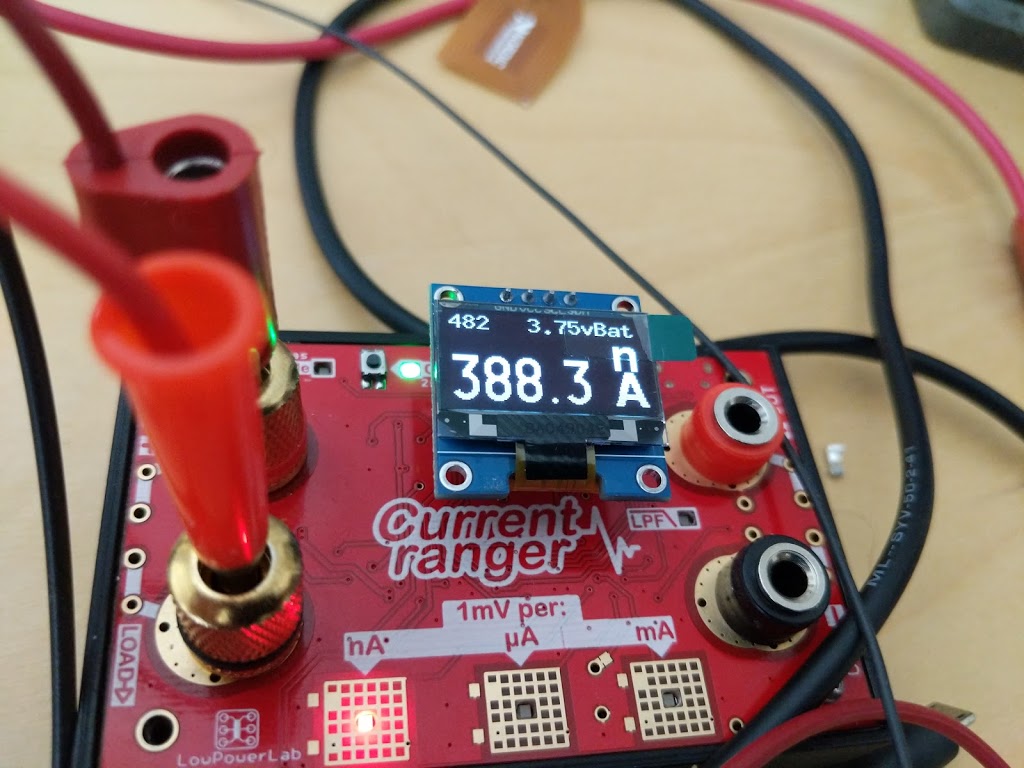
Measuring sleep current nRF52840
https://studio.youtube.com/video/aNdvIg-eLKE/
The code should not be run in debugger mode.
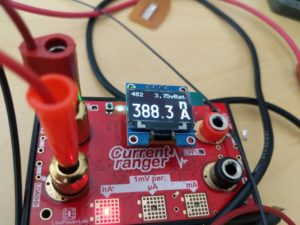 |
| YAY! ~400nA |
This setup puts the current ranger in series with the PSU connected to P21.
The setup was too complicated.
I connected the bench PSU to P21 and supplied 1v8.
This is a simpler setup
- nRF52840 DK not preview version!
- External PSU connected to P21
- Current ranger across P22
- Switch vEXT->nRF OFF
- nRF Only/Default switch on nRF Only
Latest setup
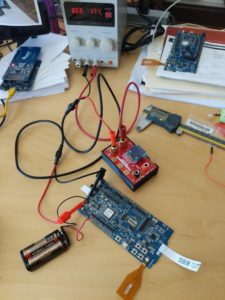 |
| Connections |
- Power comes from two sources: the bench PSU, and a 3V battery pack.
- The Current Ranger is in the +ve line of the bench supply which feeds the “External” connector
- The battery is between the ground of the bench PSU and the Vdd pin on the nRF52 because it needs to fool the current tracker.
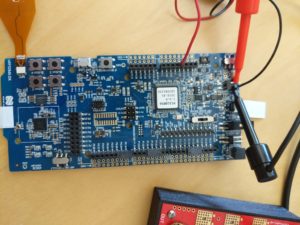 |
| Switches |
- Switch SW6 is on “nRF ONLY”
- Switch S10 is “ON”
- Bridge SB58 is cut
- nRF power source switch is on Vdd
- p22 is bridged with a jumper IFF SB10 is cut
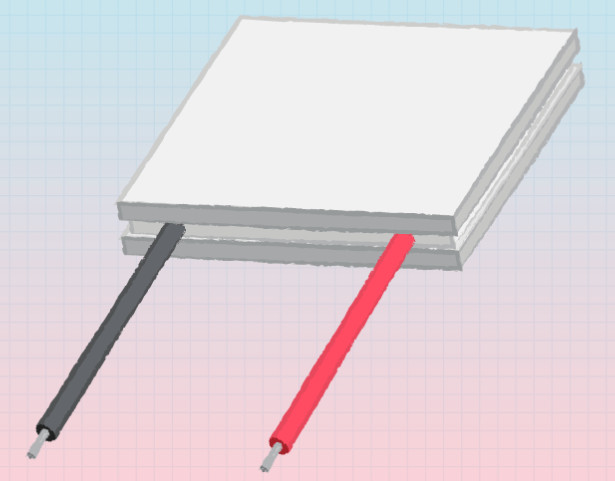
I don’t see a point in using a super-cap for energy harvesting apps. May as well use a lipo, which has better power density.
Slow charge a LiPo from harvested power
For battery charging purposes maximum power-point tracking seems to be a good thing.
Looking at the energy harvesting regulators that David found they seem to be specialized for different applications:
Thermoelectric Regulators
Using it backwards to generate electricity is called the Seebeck Effect. From the examples on this video it looks like you need fire on one side, and ice on the other to generate enough current to charge a phone!
Here’s a 12V Peltier plate spec
Model: TEC1-12706.
Size: 40mm x 40mm x 3.6mm.
Working current: 4.3-4.6 A (rated 12 v); Imax: 6A.
Rated voltage: DC12V (Vmax: 15 v starting current 5.8 A).
Operates Temperature: -30℃ to 70℃.
Refrigeration power: Qcmax 50-60 w.
They come in sizes as small as 15x15mm from Digikey.
Have to get good contact between the heat source/sink and the Peltier. Here’s some heat conducting glue. Also probably need a heat-sink.
Digression – Peltier watch…
Here is a proof-of-concept Peltier watch which at least shows it’s feasible.
Latest update is not great news. I wonder how often you have to get your wrist out in the sun to be effective.
Cool Video – https://www.indiegogo.com/projects/smartwatch-powered-by-you-matrix-powerwatch-2#/
I wonder where the solar panel is?
Back to the plot…
LTC3106
LTC3107
LTC3108-1
LTC3108
LTC3109
ADP5091
Piezo
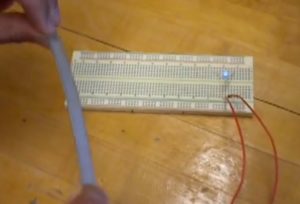 |
|
LED illuminates momentarily each time the piezo strip is flexed
|
Solar
ADP5092
Slow charge a supercap
Here is an app schematic that seems to handle both solar and capacitor.
Quick Charge
And here is one designed just to charge a cap.
But the MAX14575 requires that the input voltage is the same as the desired output voltage. Also it seems to have some limit on the size of capacitor it can handle.
For a 100F SuperCap 100,000,000 = (250 * tBlank) / 2.7.
tBlank = 1080 seconds!
So it seems like it will turn the output on/off until the overcurrent condition goes away. The duty cycle will be about 3%. The alternative is to use the 14575C which does not duty cycle, but it might get hot!
The MAX667 seems to limit the voltage and the current (to 250 rather than 240, but hey). But perhaps it doesn’t limit the current drawn, and simply get’s hot and angry.
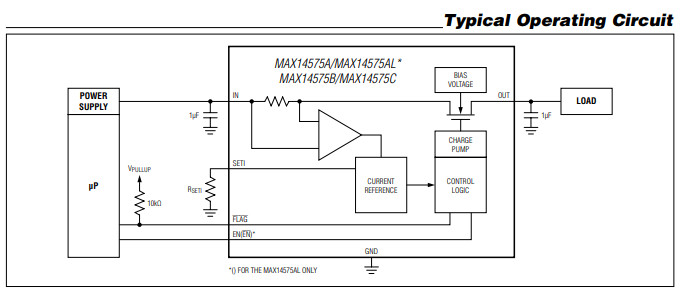
I found two ICs that might be able to limit voltage and current. There are probably others.
I need to see if they can limit voltage to 2v7 and current to 240mA.
MAX17525
MAX14575
TLV70227QDBVRQ1 looks like this.
So basically, I’ll have the LDO sucking 5v5 and blowing 2v7 at 300mA into the current limiter which will pass through 2v7, but chop the current at 240mA (10C).
Now my question is, do I really need the current limiter, or can I rely on the LDO to limit the current, or does it catch fire if the supercap tries to draw too much?
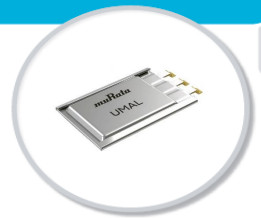
SuperCap Feasibility
The Amazon BiP sports a 190 mAh battery. Our data shows that it can listen for BLE packets for at least 10 days. It’s also running sensors, a display, and a GPS periodically.
So a supercap is in the ballpark. Maybe with an e-ink display it can do better.
Charging the SuperCap
I’d like to make a PSU that can try out a whole bunch of charging strategies:
‘Instant’ charging.
Instant = seconds to minutes.
